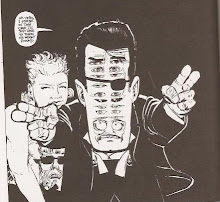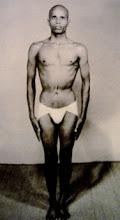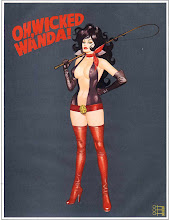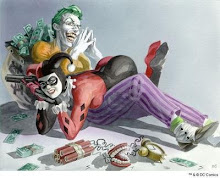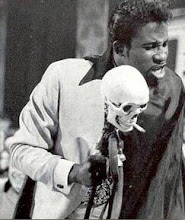1) Béla Lugosi Most Iconic Dracula
Most Iconic Dracula
 Most Iconic Dracula
Most Iconic DraculaBela Lugosi's portrayal of Dracula in the 1931 film directed by Tod Browning influenced what most American's think of when they think of Dracula or vampires in general. He honed his portrayal on the stage in the Broadway production of Hamilton Deane's play Dracula. It is his Hungarian accent that we think of with "I vant to suck your blood." It is his portrayal that influenced the creation of the Sesame Street Muppet Count von Count. It is Lugosi's portrayal that all others think of when they prepare to play the Count. It was his portrayal that was thought of when the post punk band Bauhaus wrote Bela Lugosi's Dead.
2) Christopher Lee Most Prolific Dracula
Most Prolific Dracula
 Most Prolific Dracula
Most Prolific DraculaChristopher Lee has portrayed Dracula more than any other actor. He portrayed the count in at least 10 films between 1958's Dracula and 1973's The Satanic Rites of Dracula. Most of the films were produced by Hammer Films, and he is the second most thought of actor in the role after Bela Lugosi.
3) Gary Oldman Coolest Dracula
Coolest Dracula
or
Most Bad Ass Dracula
 Coolest Dracula
Coolest Draculaor
Most Bad Ass Dracula
1992 saw the release of Francis Ford Coppola's Dracula. One of the best portraits of Dracula comes from this film. Gary Oldman was perfect as both the aged Dracula in his castle and the young Dracula, prior to becoming a vampire and after feeding in London. As the young Dracula, he is the coolest; as the aged Dracula he is the most bad ass.

4) Frank Langella Sexiest Dracula
Sexiest Dracula
or
Most Disco Dracula
 Sexiest Dracula
Sexiest Draculaor
Most Disco Dracula
In 1977 a revival of Hamilton Deane's Dracula opened on Broadway with sets and costumes by Edward Gorey. Frank Langella was cast in the lead role of Dracula. Two years later he starred in a film version, and the steamiest Dracula was born. Langella has refused to portray a vampire in any of the films that he has made since, in order that he not be typecast. Thankfully for us he made this movie.
5)John Carradine Most Waspy Dracula
Most Waspy Dracula
 Most Waspy Dracula
Most Waspy DraculaThe 1945 film House of Dracula features John Carradine in the most waspy portrayal of Dracula ever. Carradine's portrayal is noteworthy, because it is the most emotionless.
6) Udo Kier Creepiest Dracula
Creepiest Dracula
 Creepiest Dracula
Creepiest DraculaReleased in 1974 Blood for Dracula is also sometimes known as Andy Warhol's Dracula, because he produced the film. Blood for Dracula was written and directed by Paul Morrissey, who did most of Andy's films. In the movie, Dracula needs to find a virgin to feed from in order to grow younger. Though the film isn't the best Dracula movie, Udo Kier's performance is the creepiest of any Dracula.
7) Gerard Butler Most Heretical Dracula
Most Heretical Dracula
 Most Heretical Dracula
Most Heretical DraculaIn 2000 the film Dracula 2000 was released and it bombed. A then unknown Gerard Butler starred as Dracula, and most of the other actors in the film weren't known at the time, but have become stars since. The reason that this Dracula is the most heretical is that he is also Judas Iscariot, the betrayer of Christ.
8) Zandor Vorkov Cheesiest Dracula
Cheesiest Dracula
 Cheesiest Dracula
Cheesiest DraculaIn the mid 90s I ran across this movie on late night TV. Released in 1971 Dracula vs. Frankenstein is important in the history of horror movies in that it was the final film Lon Chaney Jr. starred in. The movie is sincere in its attempts to scare but is funny instead, which is why it is cheesy. The movie wasn't produced by, but was distributed by Troma, the masters of schlock. Dracula doesn't appear until midway through the movie. When he does appear he is portrayed by Zandor Vorkov, who looks like Dracula if he were portrayed by Phil Lynott from Thin Lizzy.
9) Jack Palance Most Intimidating Dracula
Most Intimidating Dracula
 Most Intimidating Dracula
Most Intimidating DraculaIn 1973 Jack Palance starred in a made for TV movie Dracula. The movie incorporated elements of Radu Florescu's research into the real Dracula to the story from Bram Stoker's novel. Palance brought a very intimidating presence to the role, as he did to every role that he played.
10) Leslie Nielsen Funniest Dracula
Funniest Dracula
 Funniest Dracula
Funniest DraculaIn 1995 Mel Brooks released his take on Dracula with Dracula:Dead and Loving it. In addition to being the funniest Dracula movie to date, it actually was pretty close to the book. In fact, this movie was closer to Bram Stoker's original story than 99% of the movies that have been made.
11) George Hamilton Tannest Dracula
Tannest Dracula
 Tannest Dracula
Tannest DraculaDracula is supposed to be swarthy. George Hamilton isn't swarthy, just over tan and waspy. In the movie Love at First Bite he portrayed the bloodthirsty Count in the campiest offering ever. Released in 1979 I remember this film as a staple of late night movies in the 80s and 90s. Since the humor was intended, it can't be considered cheesy. Though this movie was somewhat funny, it was not the laugh riot that Dracula:Dead and Loving it was.
12) Raúl Juliá Coolest Unseen Dracula
Coolest Unseen Dracula
 Coolest Unseen Dracula
Coolest Unseen DraculaIn 1978 Raul Julia replaced Frank Langella in the Broadway production of Dracula. Though he never played the Count in movies or on TV, I think he probably made an excellent Dracula on stage and that he would have been excellent in a movie.
13) Vlad Ţepeş Most Real Dracula
Most Real Dracula
 Most Real Dracula
Most Real DraculaBram Stoker's inspiration for his bloodthirsty count was taken from the Romanian legendary hero. Only in Romania would they have this man as a national hero. Nicolae Ceausescu took the research done by Radu Florescu and Raymond McNally and twisted it into a propaganda that glorified the violent medieval prince. It made Ceausescu seem a little less wicked to be compared to such a "hero". The name Dracula is Romanian for "son of Dracul(Dragon)". This was due to his father being a member of the medieval order of the Dragon, a society pledged to guard the Holy Roman Emperor. Dracula's father sent him to be held by the Ottoman Emperor as collateral. It was a cruel age he lived in and he was perfectly suited to it.
Om SHAnti SHAnti SHAnti
Om SHAnti SHAnti SHAnti























